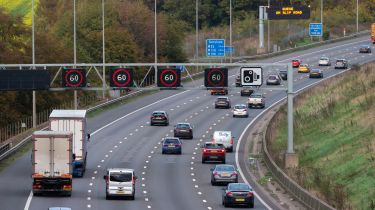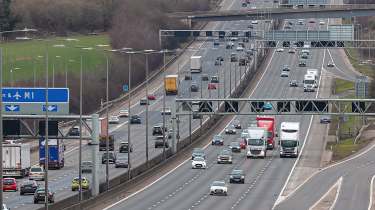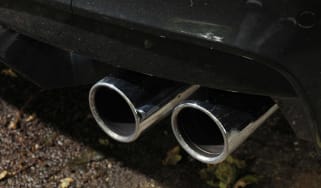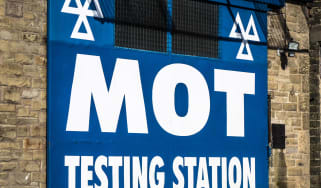What is a smart motorway? Speed cameras, safety concerns and hard shoulder use explained
Smart motorways are meant to be a cost-effective way of increasing road capacity, but how do you use them and how safe are they?

Smart motorways were introduced as a cost-effective way of increasing road capacity and reducing congestion along particularly busy sections of UK motorway, without the need to build or widen existing lanes. The smart motorway concept centres around the ‘smart’ management of traffic flows using technology. This includes allowing traffic to drive on the hard shoulder at busy times with traffic controlled by cameras and digital signs on overhead gantries. Smart motorways have proved controversial because of safety concerns around the removal of hard shoulders.
There are different types of smart motorway with various different traffic management systems in place, but breakdowns in live-running lanes on roads where the hard shoulder has been opened to ease traffic flow have had tragic consequences. This led to questions regarding smart motorway safety and, ultimately, the UK Government stopping all new smart motorway projects in April 2023.
So, what are smart motorways and how safe are they? This smart motorway guide will explain all.
What are smart motorways?
The first smart motorway section in the UK was opened in 2006 on the M42 in the West Midlands and was seen as a cost-effective way to increase road capacity without the need to construct new lanes. The smart motorway uses various traffic management techniques, including temporary or permanent removal of the hard shoulder.
On smart motorways where the hard shoulder has been removed, permanently or otherwise, emergency refuge areas are introduced three-quarters of a mile apart, where possible, and no more than one mile apart on any new stretches. According to National Highways, around ten per cent of the UK motorway network is now made up of smart motorways.
Breakdowns and accidents on smart motorways
Despite having refuge areas and safety technology to detect live-lane stoppages like breakdowns or accidents, smart motorways have been surrounded by controversy. Drivers whose cars break down on a smart motorway without a hard shoulder and are unable to make it to an emergency refuge area are left at the mercy of Highways England CCTV operators, who take an average of 17 minutes to spot a broken-down vehicle, or the automated stopped vehicle detection technology (SVD). This has often had catastrophic results. Consequently, many motorists have little confidence when travelling along these stretches of roads.
When a broken-down vehicle is spotted, it then takes operators a further three minutes to change the signage signal for the obstructed lane to a ‘red X’ - effectively closing the lane. Even once this is done, though, many drivers have a tendency to miss or ignore these red X signals, with Highways England issuing 180,000 warning letters for the offence between 2017 and summer 2018.
Unless the driver is able to get their broken-down car to an emergency refuge area - which are spaced up to one mile apart from one another along smart motorways - they will have to wait for either the police or Highways England to physically shut the lane before their breakdown company will recover the vehicle.
In April 2023, the Government and Department for Transport succumbed to pressure regarding smart motorways, cancelling plans to build any more than the 300 miles of road currently in operation in the UK. £900 million of funding was also provided to help improve the existing smart motorway network, including increasing technology reliability and installing 150 additional safety refuge areas.

What are the different types of smart motorways?
There are three different types of smart motorways schemes in operation in the UK:
Controlled motorway schemes
Controlled motorways have three or more lanes with variable speed limits, however, a traditional hard shoulder remains in place in case of emergencies.
Variable speed limit changes will be displayed on overhead gantries; with speed cameras in place to enforce the new limits. The gantries can also display lane closures with a red ‘X’ and drivers must exit the closed lane as soon as possible.
Dynamic hard shoulders
Stretches of smart motorway which use dynamic hard shoulders will turn the hard shoulder into a live running lane during busy periods to help ease congestion. The carriageway will still have a solid white line between lane one and the hard shoulder to differentiate the two lanes.
Overhead gantries will signal if and when the hard shoulder may be used as a live traffic lane, and if a red ‘X’ is displayed or the overhead signs remain blank, you must not use the hard shoulder as a live running lane. Variable speed limits may be displayed on overhead gantries during times of heavy congestion or approaching an incident, with speed cameras enforcing the new speed limits.
All-lane running
As the name suggests, all-lane running (ALR) smart motorway schemes permanently remove the hard shoulder and convert it to a live running lane to be used by traffic at all times. On ALR motorways, the hard shoulder becomes lane one and will only be closed in the event of an incident or emergency. If the lane is closed, a red ‘X’ will be displayed on the overhead gantries, or on verge mounted signs and drivers must exit the lane or lanes as soon as possible.
Overhead gantries will also be used to show variable speed limits when necessary, depending upon road or traffic conditions with speed cameras used to enforce the lower limits. If no speed limit is displayed on the gantry, the national speed limit applies. CCTV cameras are used to monitor traffic lanes for any incidents, but if drivers have an accident or break down, they should try to get to an emergency refuge area wherever possible. ALR smart motorways are the most controversial stretches of the smart motorway network.
Are smart motorways safe?
According to ROSPA (Royal Society for the Prevention of Accidents), motorways are statistically the safest roads in the UK. In 2023, Nick Harris, chief executive at National Highways, said, “all three types of smart motorways are safer than conventional motorways”, with statistics from 2017 to 2021 further backing this claim up. However, Auto Express later revealed that smart motorways are safer than conventional motorways, unless your car breaks down, with National Highways stats showing increased dangers following breakdowns and incidents on smart motorways. This is despite improved overall safety.
Even though smart motorways are statistically safer than conventional motorways, drivers are three times more likely to be killed or seriously injured when breaking-down on a smart motorway, compared to one with a hard shoulder. Faulty digital gantry technology used on smart motorways is also putting drivers at risk, with a 2024 BBC Panorama Freedom of Information request discovering that between June 2022 and February 2024, there were almost 400 power outages along smart motorway routes, rendering the signage inoperable.
In 2022 alone, official data also showed that there were over 2,300 faults with smart motorway radar systems which are designed to monitor the flow of traffic in order to detect if a car has stopped in a live lane. On average, it took five days to resolve these issues and National Highways’ own figures suggest one-in-ten cars which stop on smart motorways escape detection, even if the radar system is fully functioning.
Since the introduction of smart motorways, at least 79 people have been killed on these roads and the schemes have been criticised by coroners and police commissioners. Motoring organisations like the AA and loved ones of those killed on smart motorways have been campaigning for the hard shoulder to be reinstated on roads converted to ALR smart motorways.
In April 2023, the Government axed plans for the introduction of any new smart motorways and pledged £900 million in funds to improve safety technology and introduce more emergency refuge areas on existing stretches of smart motorways.
Smart motorway safety tips
If your car happens to break down on a smart motorway, as with any road, dual carriageway or motorway, knowing how to react will help keep you safe.
If you have a breakdown or car problem while travelling on a smart motorway, do not panic. You should exit the smart motorway immediately or use an emergency refuge area if you cannot reach an exit. Below are some tips on what to do if you have a breakdown on a smart motorway.
- In all cases, switch on your hazard warning lights, exit the car through the nearside door and stand on the far side of the safety barrier away from moving traffic.
- Use an emergency refuge area if you are able to reach one safely. These are painted yellow and marked with blue signs featuring an orange SOS telephone symbol on them.
- If you cannot get to an emergency refuge area, switch on your hazard warning lights and move on to the verge if there is no safety barrier and it is safe to do so, getting out of the left hand side (nearside) door.
- If there is a safety barrier, get out of the car using the left hand door (nearside) and wait behind the barrier.
- If you cannot stop in the nearside lane or exit your vehicle safely, stay in your car with your seatbelts on and call 999 if you have access to a mobile.
- If you can leave your vehicle safely, contact Highways England via the roadside SOS telephone provided in all emergency refuge areas. A traffic officer will either be sent to help, or the motorway signs will be set to temporarily close lanes or reduce speed limits whilst you remain in the emergency refuge area.
- A further call to Highways England is recommended when you plan to re-join the motorway so further restrictions can be put in place to make this as safe as possible.
Have you ever broken-down on a smart motorway? Tell us what happened in the comments below...
Find a car with the experts








